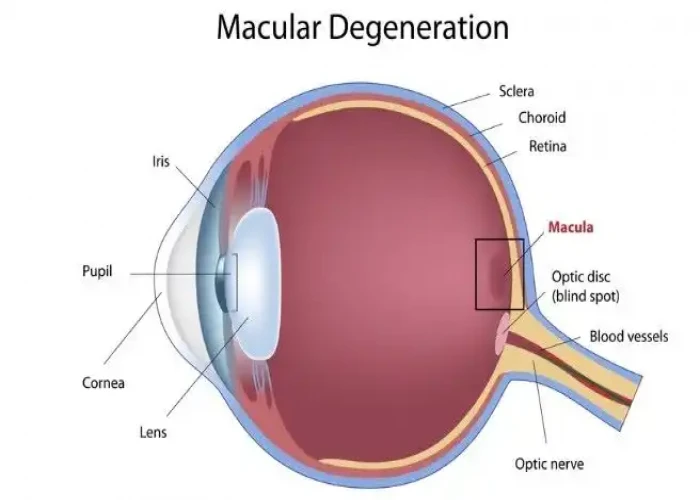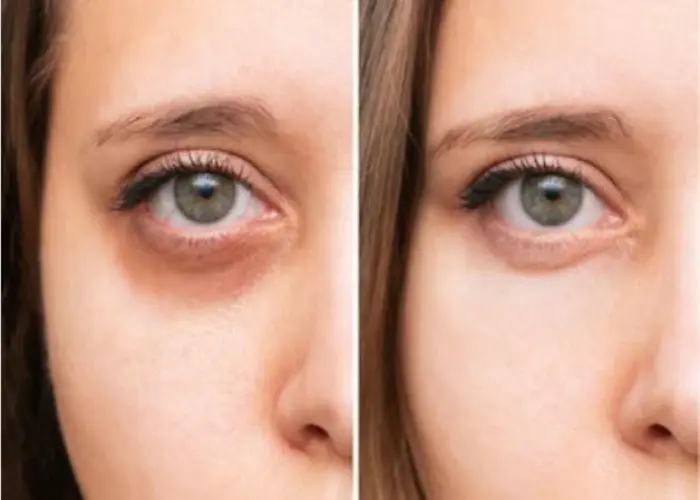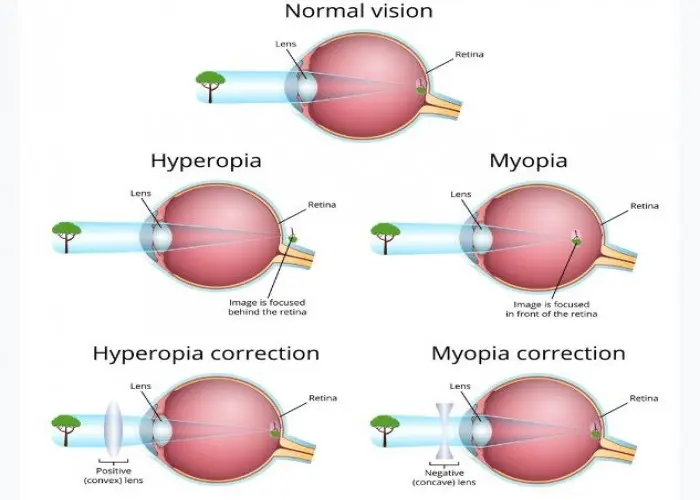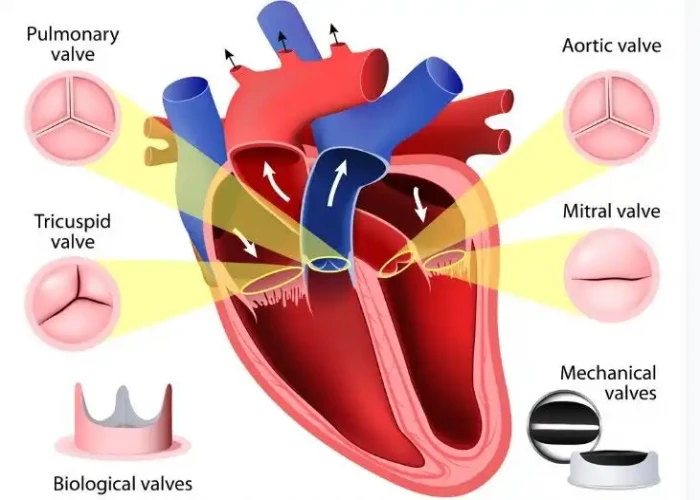 Welcome
Welcome
“May all be happy, may all be healed, may all be at peace and may no one ever suffer."
Tricuspid valve regurgitation

Tricuspid valve regurgitation is a condition in which the tricuspid valve in the heart does not close properly, allowing blood to flow back into the right atrium of the heart instead of forward into the right ventricle. This can cause a variety of symptoms and can lead to serious complications if left untreated.
The tricuspid valve is located between the right atrium and right ventricle of the heart and helps to regulate blood flow between these chambers. When the valve does not close properly, blood can flow back into the right atrium, which can cause an increase in pressure in the heart and lungs.
The symptoms of tricuspid valve regurgitation can vary depending on the severity of the condition, but may include:
- Shortness of breath
- Fatigue
- Swelling in the legs and feet
- Abdominal swelling
- Irregular heartbeat
In some cases, tricuspid valve regurgitation may not cause any symptoms at all and may be detected during routine medical exams.
Treatment for tricuspid valve regurgitation depends on the severity of the condition and the underlying cause. In some cases, medication may be prescribed to help manage symptoms and reduce the risk of complications. For more severe cases, surgery may be recommended to repair or replace the valve.
Some common treatments for tricuspid valve regurgitation may include:
- Diuretics: These medications may be used to help reduce swelling in the legs and feet.
- Blood thinners: These medications may be prescribed to reduce the risk of blood clots.
- Surgery: In some cases, surgery may be recommended to repair or replace the tricuspid valve.
It is important to seek medical attention if you experience any symptoms of tricuspid valve regurgitation, as early diagnosis and treatment can help prevent complications and improve outcomes.
Research Papers
Disease Signs and Symptoms
- Fatigue (Tiredness)
- Irregular heartbeats (arrhythmia)
- Shortness of breath (dyspnea)
- Swollen abdomen (Ascites)
- Swollen leg
- Swollen neck
- Swollen veins on scalp
Disease Causes
Tricuspid valve regurgitation
To understand the causes of tricuspid valve regurgitation, it may be helpful to know how the heart and heart valves typically work.
A typical heart has four chambers. The two upper chambers (atria) receive blood. The two lower chambers (ventricles) pump blood. Four valves open and close to keep blood flowing in the correct direction. These heart valves are:
- Aortic valve
- Mitral valve
- Tricuspid valve
- Pulmonary valve
The tricuspid valve sits between the heart's two right chambers. The tricuspid valve consists of three thin flaps of tissue (called cusps, or leaflets). These valve flaps open to let blood flow from the upper right chamber (right atrium) to the lower right chamber (right ventricle). The valve flaps then close tightly to prevent the blood from moving backward.
In tricuspid valve regurgitation, the tricuspid valve doesn't close tightly. As a result, blood leaks backward into the right atrium.
Tricuspid valve regurgitation can be caused by:
- Heart defects present at birth (congenital heart defects). Some congenital heart defects can affect the shape and function of the tricuspid valve. Tricuspid valve regurgitation in children is usually caused by a rare congenital heart defect called Ebstein anomaly. In this condition, the tricuspid valve is malformed and sits lower than usual in the right ventricle.
- Genetic disorders. Marfan syndrome is a connective tissue disorder occasionally associated with tricuspid valve regurgitation.
- Rheumatic fever. This complication of untreated strep throat can damage the tricuspid valve and other heart valves, causing valve regurgitation later in life.
- Infection of the lining of the heart (infective endocarditis). An infection of the lining of the heart can damage the tricuspid valve.
- Carcinoid syndrome. In this rare condition, tumors that develop in the digestive system and spread to the liver or lymph nodes produce a hormonelike substance that can damage heart valves, most commonly the tricuspid valve and pulmonary valves.
- Chest injury (trauma). Experiencing trauma to the chest, such as in a car accident, may cause damage that leads to tricuspid valve regurgitation.
- Pacemaker or cardiac device wires. Tricuspid valve regurgitation sometimes occurs during the placement or removal of pacemaker and defibrillator wires, which cross the tricuspid valve.
- Heart muscle (endomyocardial) biopsy. In this procedure, a small amount of heart muscle tissue is removed and tested for signs of inflammation or infection. Valve damage can sometimes occur during this biopsy.
- Radiation therapy. Receiving radiation to the chest, for example during cancer treatment, may damage the tricuspid valve and cause tricuspid valve regurgitation.
Disease Prevents
Disease Treatments
Treatment for tricuspid valve regurgitation depends on the cause and severity of the condition. The goals of treatment are to:
- Reduce signs and symptoms
- Prevent complications
- Improve quality of life
If you have mild tricuspid valve regurgitation, you may not need regular follow-ups. For more severe regurgitation you may need regular appointments to monitor your condition.
If tricuspid valve disease is due to an underlying condition or congenital heart defect, you may need medications, a catheter procedure, or surgery to repair or replace the valve.
Medications
Your health care provider may prescribe medications to control symptoms or to treat an underlying condition that is causing tricuspid regurgitation. Medications may include:
- Drugs to remove extra fluids from the body (diuretics)
- Drugs to control irregular heartbeats (anti-arrhythmics)
- Other drugs to treat or control heart failure
Surgery or other procedures
Some people with tricuspid valve regurgitation may need surgery to repair or replace the valve. Valve repair or replacement may be done as open-heart surgery or as a minimally invasive heart surgery. Sometimes a tricuspid valve problem may be treated with a catheter-based procedure.
A health care provider may recommend tricuspid valve repair or replacement surgery if:
- You have severe tricuspid valve regurgitation with signs or symptoms
- You have swelling (enlargement) of the heart with or without signs and symptoms
- You have tricuspid valve regurgitation and need heart surgery for another condition, such as mitral valve disease
Surgery or other procedures to treat tricuspid valve regurgitation include:
- Tricuspid valve repair. Tricuspid valve repair is usually done with open-heart surgery. Repair may include patching holes or tears in the valve, reshaping or removing tissue to help the valve close more tightly, separating valve flaps (leaflets), or adding support to the valve base or roots.
- The cone procedure is a type of valve repair surgery used to treat tricuspid regurgitation in people with Ebstein anomaly, a congenital heart defect. The heart surgeon separates the leaflets that close off the tricuspid valve from the underlying heart muscle. The leaflets are then rotated and reattached.
- Tricuspid valve repair helps preserve heart function. It also may reduce the potential need for long-term use of blood thinners.
- Tricuspid valve replacement. If the tricuspid valve can't be repaired, the surgeon may remove the damaged or diseased valve and replace it with a mechanical valve or a valve made from cow, pig or human heart tissue (biological tissue valve).
- If you have a mechanical valve, you'll need to take blood-thinning medications for life to prevent blood clots. However, biological tissue valves can break down over time, and often eventually need to be replaced. Together, you and your health care provider can discuss the risks and benefits of each type of heart valve to determine the best one for you.
- Catheter procedure. If you have a biological tissue tricuspid valve that's no longer working, a catheter procedure may be done instead of open-heart surgery to replace the valve. The doctor inserts a thin, hollow tube (catheter) into a vein and guides it to the tricuspid valve using X-rays as a guide. The replacement valve is passed through the catheter into the existing biological valve.
- Other procedures. If tricuspid valve regurgitation is causing heart rhythm problems (arrhythmias), catheter ablation or a type of open-heart surgery called the maze procedure may be done to block faulty heart signals that trigger irregular heartbeats.
Disease Diagnoses
Disease Allopathic Generics
Disease Ayurvedic Generics
Disease Homeopathic Generics
Disease yoga
Tricuspid valve regurgitation and Learn More about Diseases

Factor V Leiden

Carcinoid syndrome

Wet macular degeneration

Tuberous sclerosis

Bags under eyes

Muscular dystrophy

Alcohol poisoning

Farsightedness
Tricuspid valve regurgitation, ট্রাইকাসপিড ভালভ রিগার্গিটেশন
To be happy, beautiful, healthy, wealthy, hale and long-lived stay with DM3S.
